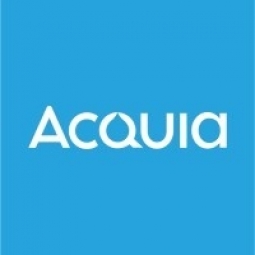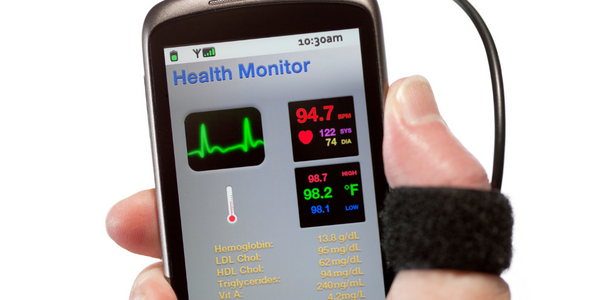技术
- 应用基础设施与中间件 - 中间件、SDK 和库
- 功能应用 - 企业资产管理系统 (EAM)
适用行业
- 电网
- 医疗保健和医院
适用功能
- 产品研发
- 销售与市场营销
用例
- 资产健康管理 (AHM)
- 资产生命周期管理
服务
- 云规划/设计/实施服务
- 系统集成
关于客户
EBSCO Information Services 是向图书馆、医院、医疗机构和企业提供数字研究材料的全球领导者。该公司提供广泛的内容,包括研究数据库、书籍和电子书、档案、即时医疗参考和企业学习工具。 EBSCO 为全球数万家机构的数百万最终用户提供服务。 70 多年来,该公司一直与图书馆和其他机构合作改进研究。其在线研究平台每天吸引超过1亿的页面浏览量。
挑战
EBSCO Information Services 是一家领先的数字研究材料提供商,随着其营销部门的扩张,面临着重大挑战。该公司的数字资产分散在各种平台上,包括 Microsoft Sharepoint、网络驱动器、本地硬盘、电子邮件附件、桌面和 Google Drive。这种杂乱无章的数字环境阻碍了 EBSCO 的扩展,导致品牌过时、缺乏有凝聚力的元数据,以及在创建丢失资产的副本和在多个系统中发布一项资产时效率低下。由于缺乏标准化的资产元数据以及清晰的标签或生态系统中记录的历史版本,常常导致 EBSCO 的营销和销售团队无法识别最新批准的资产版本。分散的资产还导致浪费时间和金钱,造成丢失资产的重复,并且在多个系统中低效地发布和维护一项资产。
解决方案
为了应对这些挑战,EBSCO 求助于 Acquia 的数字资产管理器 (DAM)。在考虑了 Gartner 魔力象限中的七家供应商后,EBSCO 确定 Acquia DAM 是解决其数字资产混乱问题的完美解决方案。该公司将 DAM 无缝连接到 Drupal 8 及其 Acquia Cloud CMS,使其能够为所有营销网站提供支持。 Acquia DAM 的单点登录 (SSO) 集成和移动友好型设计使 EBSCO 的营销、销售和产品管理团队可以轻松地在 DAM 的品牌门户前端进行自助注册。这简化了查找和上传所需资产的流程,并更有效地管理自己的项目,而无需依赖内部 IT 团队。
运营影响
数量效益

Case Study missing?
Start adding your own!
Register with your work email and create a new case study profile for your business.
相关案例.

Case Study
Hospital Inventory Management
The hospital supply chain team is responsible for ensuring that the right medical supplies are readily available to clinicians when and where needed, and to do so in the most efficient manner possible. However, many of the systems and processes in use at the cancer center for supply chain management were not best suited to support these goals. Barcoding technology, a commonly used method for inventory management of medical supplies, is labor intensive, time consuming, does not provide real-time visibility into inventory levels and can be prone to error. Consequently, the lack of accurate and real-time visibility into inventory levels across multiple supply rooms in multiple hospital facilities creates additional inefficiency in the system causing over-ordering, hoarding, and wasted supplies. Other sources of waste and cost were also identified as candidates for improvement. Existing systems and processes did not provide adequate security for high-cost inventory within the hospital, which was another driver of cost. A lack of visibility into expiration dates for supplies resulted in supplies being wasted due to past expiry dates. Storage of supplies was also a key consideration given the location of the cancer center’s facilities in a dense urban setting, where space is always at a premium. In order to address the challenges outlined above, the hospital sought a solution that would provide real-time inventory information with high levels of accuracy, reduce the level of manual effort required and enable data driven decision making to ensure that the right supplies were readily available to clinicians in the right location at the right time.

Case Study
Gas Pipeline Monitoring System for Hospitals
This system integrator focuses on providing centralized gas pipeline monitoring systems for hospitals. The service they provide makes it possible for hospitals to reduce both maintenance and labor costs. Since hospitals may not have an existing network suitable for this type of system, GPRS communication provides an easy and ready-to-use solution for remote, distributed monitoring systems System Requirements - GPRS communication - Seamless connection with SCADA software - Simple, front-end control capability - Expandable I/O channels - Combine AI, DI, and DO channels

Case Study
Hydro One Leads the Way In Smart Meter Development
In 2010, Ontario’s energy board mandated that time-of-use (TOU) pricing for consumers be available for all consumers on a regulated price plan. To meet this requirement, Hydro One needed to quickly deploy a smart meter and intelligent communications network solution to meet the provincial government’s requirement at a low cost. The network needed to cover Hydro One’s expansive service territory, which has a land mass twice the size of Texas, and its customers live in a mix of urban, rural, and remote areas, some places only accessible by air, rail, boat or snowmobile. Most importantly, the network needed to enable future enterprise-wide business efficiencies, modernization of distribution infrastructure and enhanced customer service. To meet these needs, Hydro One conceptualized an end-to-end solution leveraging open standards and Internet Protocols (IP) at all communication levels. The utility drew upon industry leaders like Trilliant to realize this vision.

Case Study
Driving Digital Transformations for Vitro Diagnostic Medical Devices
Diagnostic devices play a vital role in helping to improve healthcare delivery. In fact, an estimated 60 percent of the world’s medical decisions are made with support from in vitrodiagnostics (IVD) solutions, such as those provided by Roche Diagnostics, an industry leader. As the demand for medical diagnostic services grows rapidly in hospitals and clinics across China, so does the market for IVD solutions. In addition, the typically high cost of these diagnostic devices means that comprehensive post-sales services are needed. Wanteed to improve three portions of thr IVD:1. Remotely monitor and manage IVD devices as fixed assets.2. Optimizing device availability with predictive maintenance.3. Recommending the best IVD solution for a customer’s needs.

Case Study
HaemoCloud Global Blood Management System
1) Deliver a connected digital product system to protect and increase the differentiated value of Haemonetics blood and plasma solutions. 2) Improve patient outcomes by increasing the efficiency of blood supply flows. 3) Navigate and satisfy a complex web of global regulatory compliance requirements. 4) Reduce costly and labor-intensive maintenance procedures.








